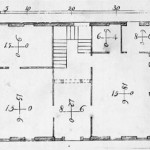Silence is argument carried out by other means. –Ernesto “Che” Guevara As this blog has repeatedly documented, it can be hard for insurers to assert the attorney-client privilege in the context of bad faith litigation. One difficulty arises in states that enforce a presumption against the privilege in bad faith suits. In many cases, insurers need to waive the privilege, to assert a defense based on advice of counsel. Last month, a federal court in South Carolina ... Keep Reading »
Construction/Builder's Risk
Fifth Circuit Finds Erosion in Texas—Because Endorsements Are Transformative
In Amerisure Mut. Ins. Co. v. Arch Specialty Ins Co., No. 14-20239 (5th Cir. April 21, 2015), a case that applied Texas law, the U.S. Court of Appeals for the Fifth Circuit recently held that the word "expenses," as used in a liability policy, unambiguously applies to attorneys' fees—and that an endorsement dealing with "expenses" had "transform[ed] the policy in an 'eroding limits' policy." Among other things, the case shows that Texans and New Yorkers don't use words ... Keep Reading »
Playing with House Money: Fifth Circuit Holds that Home Designs Can Constitute Advertisements
Insurers – who bear the burden of crafting unambiguous policy language defining the contours of coverage – constantly face difficulty in attempting to predict unexpected liability. And sometimes, Courts can make this job far more difficult. For example, a recent Fifth Circuit decision held that a copyright infringement exclusion did not apply to exclude coverage for a judgment against the insured in a case alleging, well, copyright infringement. In Mid-Continent ... Keep Reading »
Rumors of Revival Were Greatly Exaggerated: Fifth Circuit Reverses Opinion on Contractual Liability Exclusion
We previously discussed the opinion of the U.S. Court of Appeals for the Fifth Circuit in Crownover v. Mid-Continent Cas. Co., No. 11-10166 (5th Cir June 27, 2014)—an opinion that seemed to revive the contractual liability exclusion by distinguishing a landmark Texas decision that had narrowed the exclusion's scope. That was then. Late last year, the U.S. Court of Appeals for the Fifth Circuit withdrew that order and issued a new opinion on rehearing. The new opinion ... Keep Reading »
Partial Recall: Product Contamination Coverage Has Its Limits
In disputes over the scope of liability coverage, courts must often draw a line between (1) providing insurance against errors that harm others and (2) broadly guaranteeing the work product of the insured. The problem is most obvious in construction cases, when claims against the insureds arise from their own faulty workmanship. Recently, it has also emerged in connection with the food and drug industries. Last month, in Hot Stuff Foods, LLC v. Houston Casualty Co. ... Keep Reading »
Apartment Complexity: Appellate Court Sorts Out Multiple Coverage Claims for Construction of Uninhabitable Residence
In QBE Ins. Corp. v. Adjo Contracting Corp. (N.Y. App. Div. 2d Dep't Oct. 29, 2014), an intermediate appellate court in New York confronted cross-appeals involving 15 different insurers embroiled in multiple lawsuits, including consolidated class actions. The core issue of the case was whether the insurers for a variety of subcontractors were obligated to provide a defense to tenants' lawsuits against the developer and general contractor of a doomed residential ... Keep Reading »
Get Exhausted! The Tenth Circuit Schools an Excess Insurer on How to Preserve Subrogation Claims in a Settlement
When I die, I want to be exhausted. –Bryan Cranston Claims against insured businesses sometimes implicate multiple liability policies issued by several different carriers, and it is sometimes prudent for some of those carriers to settle the underlying action, even if others are unwilling to contribute to the settlement. At that point, it is important for the settling insurer carefully to analyze the relevant coverage terms, before the structure of the settlement has ... Keep Reading »
Business Risk Exclusions in CGL Policies Produce a Patchwork of Decisions
On July 23 and 24, 2014, respectively, intermediate appellate courts from South Carolina and Massachusetts released opinions upholding the application of the "your work" exclusion in a commercial general liability policy against claims based on contracted work that had been performed improperly. These two decisions buttress application of the "your work" exclusion, but they also illustrate the fact that the area of business risk exclusions (which typically refers to the ... Keep Reading »
On Remand, District Court Expands Subcontractor Exception to Rule Against Coverage for Faulty Workmanship
Recent decisions from the U.S. Courts of Appeal for the Tenth and Second Circuits have partially overturned a longstanding rule against coverage for faulty workmanship under commercial general liability policies. The rule, known as the “fortuity doctrine,” was based on insuring clauses that provided coverage only for claims arising out of an “occurrence,” and which defined “occurrence” to mean “accident.” For many years, courts held that claims based on the insured’s ... Keep Reading »
In Faulty Workmanship Cases, Insuring Clause Dogs are Wagged by Exclusion Tails
In Greystone Const., Inc. v. National Fire & Marine Ins. Co., 661 F.3d 1272, 1289 (10th Cir. 2011), the U.S. Court of Appeals for the Tenth Circuit articulated an important rule for construing commercial general liability policies: [A] CGL policy ‘begin[s] with a broad grant of coverage, w[hich is then limited in scope by exclusions. Exceptions to exclusions narrow the scope of the exclusion and . . . add back coverage. But it is the initial broad grant of ... Keep Reading »







